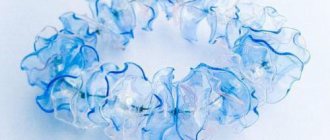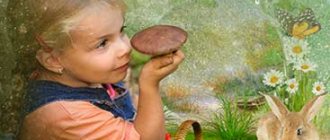Research work “Analysis of the quality of drinking water in Olekminsk”
Author: Karimberdiev Fakhridin Mahamadtokhirovich Place of work/study (affiliation): MBOU Secondary School No. 1 named after N.N. Yakovlev, Olekminsk, 7th grade Scientific supervisor: Marina Anatolyevna Chistova
Annotation:
Relevance of the study: today, all people face global problems. Not solving them threatens the existence of humanity. The problem of fresh drinking water has already come to the fore. The concept of “clean water”, this expression can only be taken as an everyday one. There are always chemical elements in water. People are forced to use water for drinking purposes that does not meet hygienic requirements, which poses a serious threat to their health. The quality of water directly affects human health, so we were interested in the following questions: What kind of water flows from our tap? What substances does it contain? Is it safe to drink?
The purpose of this work is to study the ecological state of drinking water quality in the city of Olekminsk.
To achieve this goal, we solved the following tasks :
- study special literature on the research topic;
- conduct a survey of city residents about the benefits of water, about what kind of water they prefer to drink in our city.
- master the methodology for determining the quality of drinking water;
- determine the quality of drinking water in laboratory conditions;
- provide recommendations to the local population;
Hypothesis: The better the quality of water, the less time it takes to boil. For research, I took several water samples: tap water; bottled water. Let us assume that in terms of the amount of harmful impurities our samples have the following indicators: “bad” - tap water; “good” is Olekma bottled water.
Object of study:
- Tap water;
- Bottled water "Olekma".
Subject of research: composition of water.
Practical significance: The results of the research work may be of interest to many who are concerned about this problem; they can be used at home using tap water in order to preserve their own health and take care of it.
The research work included three stages:
- the first stage is the analysis of theoretical sources on the research topic;
- the second stage is experimental;
- the third stage is processing and analysis of the results; comparison and analysis of experimentally obtained data; systematization and generalization of the results obtained.
The content of the work:
If the attached file is not displayed, please reload the
Loading page...
Taking too long?
Reload document
| Open in new tab
Research project “Water and Life”
Relevance of the problemWater is not just the main source of life on Earth, it is life itself. This universal liquid is an essential component of all creatures on the planet, including man himself.
I heard that water nourishes all living organisms. People deal with water every day throughout their lives. They use it for drinking and food, for washing, in the summer for rest, in the winter for heating.
My grandmother and I often water flowers together, and I became interested in how water nourishes flowers and our body as well. This topic is relevant, since preserving the environment and natural balance is one of the global problems of humanity. If there is no fresh, clean water on Earth, then life on it will disappear.
Purpose of the study
: to reveal whether water actually gives life to organisms.
Job Objectives
:
- study information about water;
- trace the process of feeding living organisms with water, using the example of chrysanthemum flowers;
- analyze the results and draw conclusions.
Object of study
: One of the main functions of water is nutrition.
Subject of study
: water as a source of life.
In my work I used the method
experiment is a method of studying a certain phenomenon under conditions controlled by an observer.
Chapter
I. _
Water is life. Water, it would seem, is an ordinary substance, which is not more familiar. We start the morning with contact with water - washing our face, brushing our teeth. Water falls on us in the summer in the form of rain and hail, and in winter it covers us with snow.
Water is not just the main source of life on Earth, it is life itself. This universal liquid is an essential component of all creatures on the planet, including man himself. Humans are approximately 80 percent water. Existence would be impossible if it did not contain one of the most important elements - H2O.
Water is a transparent, colorless liquid, which is characterized by fluidity, the absence of a characteristic odor and taste, and also has excellent solubility and is a good conductor of dissolved substances to their destination. This property, for example, is perfectly used when fertilizing trees and other plants. When heated, water molecules expand, although this is hardly noticeable; when cooled, the opposite is true.
A well-known fact is that water can exist in three states of aggregation: liquid (rain, dew, tap water), solid (ice) and gaseous (so-called water vapor). Naturally, the most common state is fluid, liquid. Examples of this condition cover most of the planet Earth.
For humans, water is a more valuable natural resource than coal, oil, gas, iron, because it is irreplaceable. Throughout his life, a person deals with water every day. He uses it for drinking and food, for washing, in the summer for rest, in the winter for heating.
A person can live without food for about 50 days, if during a hunger strike he drinks fresh water, without water he will not live even a week - death will occur in 5 days.
An average person loses 2-3 liters of water per day. In hot weather, high humidity, and during sports, water consumption increases. Even through breathing, a person loses almost half a liter of water every day.
Proper drinking regime implies maintaining physiological water balance - this is balancing the intake and formation of water with its release.
If the body receives enough water, the person becomes more energetic and resilient. Symptoms of dehydration include dry skin, fatigue, poor concentration, headaches, high blood pressure, poor kidney function, dry cough, back and joint pain.
Scientists have already proven that drinking enough water can minimize back pain, migraines, rheumatic pain, as well as lower blood cholesterol and blood pressure, thereby reducing the likelihood of a heart attack. Drinking enough water is one of the best ways to prevent kidney stones.
Regular consumption of water improves thinking and coordination of the brain. The brain and the entire body will be sufficiently charged with the necessary substances if the water we drink is of high quality, that is, rich in minerals. A healthy person should not limit himself to drinking, but it is much healthier to drink little and often. It is harmful to drink a lot of liquid at once, since all the liquid is absorbed into the blood, and until its excess is removed from the body by the kidneys, the heart receives unnecessary stress.
Thus, we can conclude that the role of water for humans is enormous. Today, every person can create conditions for themselves to maintain invaluable water balance through proper organization of the drinking regime.
Chapter
II .
Nutrition of living organisms with water (using the example of chrysanthemum flowers)
We found out that water penetrates living organisms and nourishes them. Inside plants, water moves through special vessels. Neighboring cells of different plant tissues are connected by plasmodesmata. Through these channels, water can move from one cell to another. Various substances are also transferred with the flow of water.
And we decided to find out how this happens. To do this, we bought a bouquet of chrysanthemums, diluted food coloring in three jars; green, red and blue.
- Pour water into glasses.
- Cut off the pack of dyes.
- Pour the dyes into glasses.
- Then they made a fresh cut on the flowers and placed them in glasses.
- Cut off chrysanthemum flowers.
- Arrange the flowers among the glasses.
- We put glasses with flowers on the windowsill.
- We leave the flowers on the windowsill and wait...
After just 6 hours, we saw that the white flower petals began to turn different colors. This is how water penetrates plants and nourishes them.
The petals began to turn different colors
The next day there were more colored petals.
On the third day, the colored water reached the petals through the channels and colored most of them.
From all of the above, we can draw the following conclusion: water, penetrating through the stems to the petals, nourishes the plant and is a source of life for it.
Conclusion
The role of water in the life of every living organism is very great. For the inhabitants of the Earth, this is not only a means of quenching thirst, but also food, habitat, and a place to relax. Our planet is 70.8% water, and we ourselves are about 80%.
As a result of studying water using an experiment, we learned one of the unique functions of water, which turned out to be not only useful, but also interesting.
As a result of the constant absorption and evaporation of water in the plant, there is a constant water exchange, which includes three stages: absorption of water, its movement through the vessels of the conductive tissue, evaporation of water by the leaves. The flow of water goes through all the organs of the plant. The amount of water a plant absorbs is approximately the amount it evaporates. Only a fraction of a percent of the incoming water is used for the synthesis of substances.
The water current goes from bottom to top. Its strength depends on the intensity of absorption by the roots (trunks) and evaporation by the leaves. The water current unites all the organs of the plant, transports various compounds, and nourishes the cells with water.
Having done this work, we came to the following conclusion: water, penetrating through the stems to the petals, nourishes the plant and is a source of life for it.






